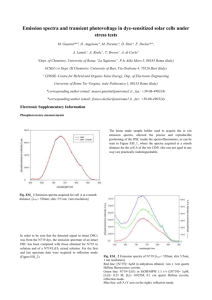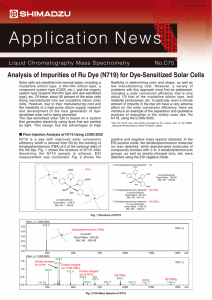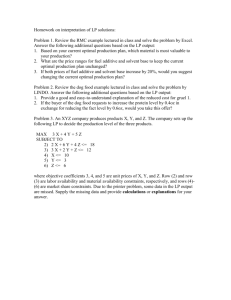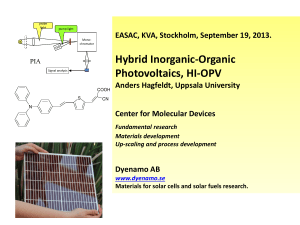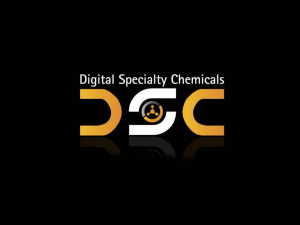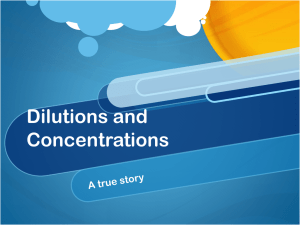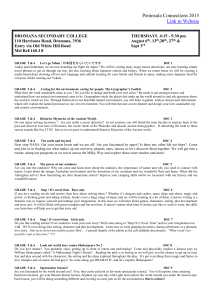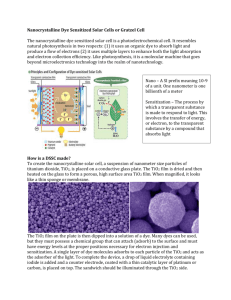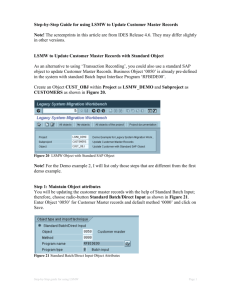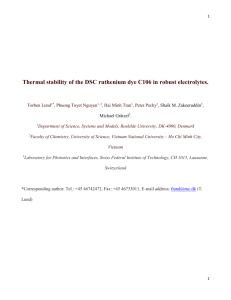Studies of Low Cost Biological Photovoltaic Cells
advertisement
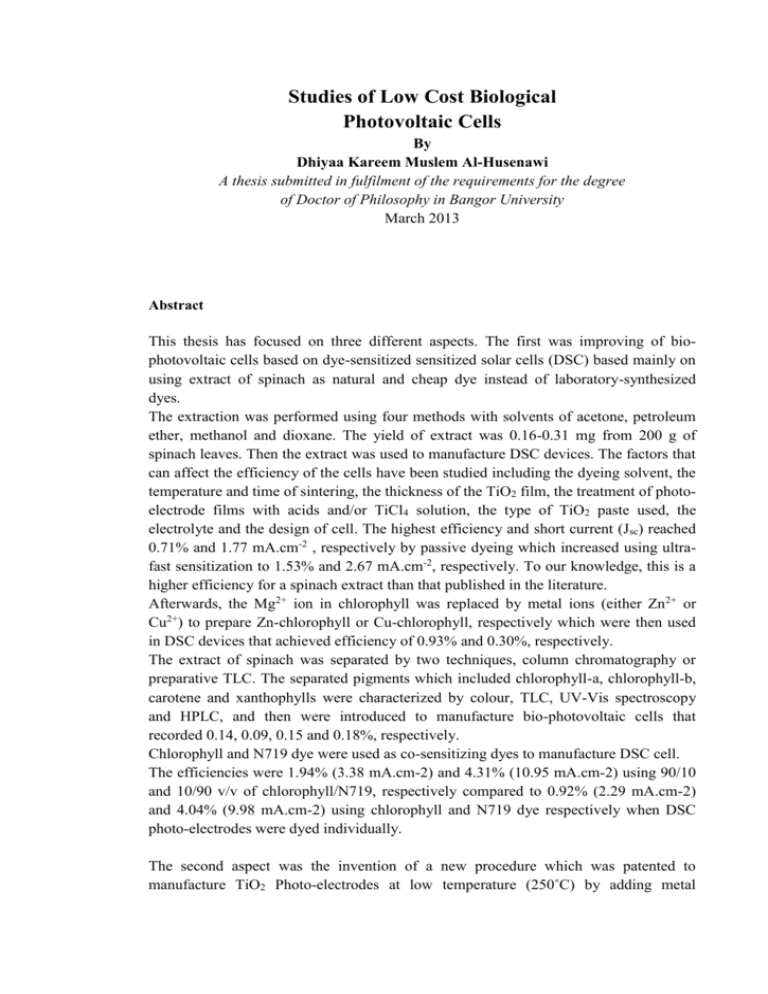
Studies of Low Cost Biological Photovoltaic Cells By Dhiyaa Kareem Muslem Al-Husenawi A thesis submitted in fulfilment of the requirements for the degree of Doctor of Philosophy in Bangor University March 2013 Abstract This thesis has focused on three different aspects. The first was improving of biophotovoltaic cells based on dye-sensitized sensitized solar cells (DSC) based mainly on using extract of spinach as natural and cheap dye instead of laboratory-synthesized dyes. The extraction was performed using four methods with solvents of acetone, petroleum ether, methanol and dioxane. The yield of extract was 0.16-0.31 mg from 200 g of spinach leaves. Then the extract was used to manufacture DSC devices. The factors that can affect the efficiency of the cells have been studied including the dyeing solvent, the temperature and time of sintering, the thickness of the TiO2 film, the treatment of photoelectrode films with acids and/or TiCl4 solution, the type of TiO2 paste used, the electrolyte and the design of cell. The highest efficiency and short current (Jsc) reached 0.71% and 1.77 mA.cm-2 , respectively by passive dyeing which increased using ultrafast sensitization to 1.53% and 2.67 mA.cm-2, respectively. To our knowledge, this is a higher efficiency for a spinach extract than that published in the literature. Afterwards, the Mg2+ ion in chlorophyll was replaced by metal ions (either Zn2+ or Cu2+) to prepare Zn-chlorophyll or Cu-chlorophyll, respectively which were then used in DSC devices that achieved efficiency of 0.93% and 0.30%, respectively. The extract of spinach was separated by two techniques, column chromatography or preparative TLC. The separated pigments which included chlorophyll-a, chlorophyll-b, carotene and xanthophylls were characterized by colour, TLC, UV-Vis spectroscopy and HPLC, and then were introduced to manufacture bio-photovoltaic cells that recorded 0.14, 0.09, 0.15 and 0.18%, respectively. Chlorophyll and N719 dye were used as co-sensitizing dyes to manufacture DSC cell. The efficiencies were 1.94% (3.38 mA.cm-2) and 4.31% (10.95 mA.cm-2) using 90/10 and 10/90 v/v of chlorophyll/N719, respectively compared to 0.92% (2.29 mA.cm-2) and 4.04% (9.98 mA.cm-2) using chlorophyll and N719 dye respectively when DSC photo-electrodes were dyed individually. The second aspect was the invention of a new procedure which was patented to manufacture TiO2 Photo-electrodes at low temperature (250˚C) by adding metal peroxides (MP) to P25 paste. The films were characterized by TGA, XRD, BET, UVVis spectroscopy, thermodynamic and dye adsorption studies. A typical cell that used N719 dye and MP/P25 sintered at 250˚C showed efficiency of 3.94% that increased to 4.97% after the sintering at 250˚C followed by UV treatment compared to cell used P25 sintered at 450˚C that showed efficiency of 3.23% or 3.63% after the sintering at 450˚C followed by UV treatment. MP/P25 films made using the same conditions (sintering at 250˚C followed by UV treatment) were used to manufacture bio-photovoltaic cell with chlorophyll dye and achieving efficiency of 0.94%. The last aspect for this study focused on development of flexible solar cells. Photoelectrodes were prepared using ITO-plastic substrates instead of FTO glass substrates were prepared by UV treatment and with or without sintering at 100˚C. The best efficiencies for these devices were 3.24%.and 0.18% when using N719 or chlorophyll as sensitizers, respectively.
